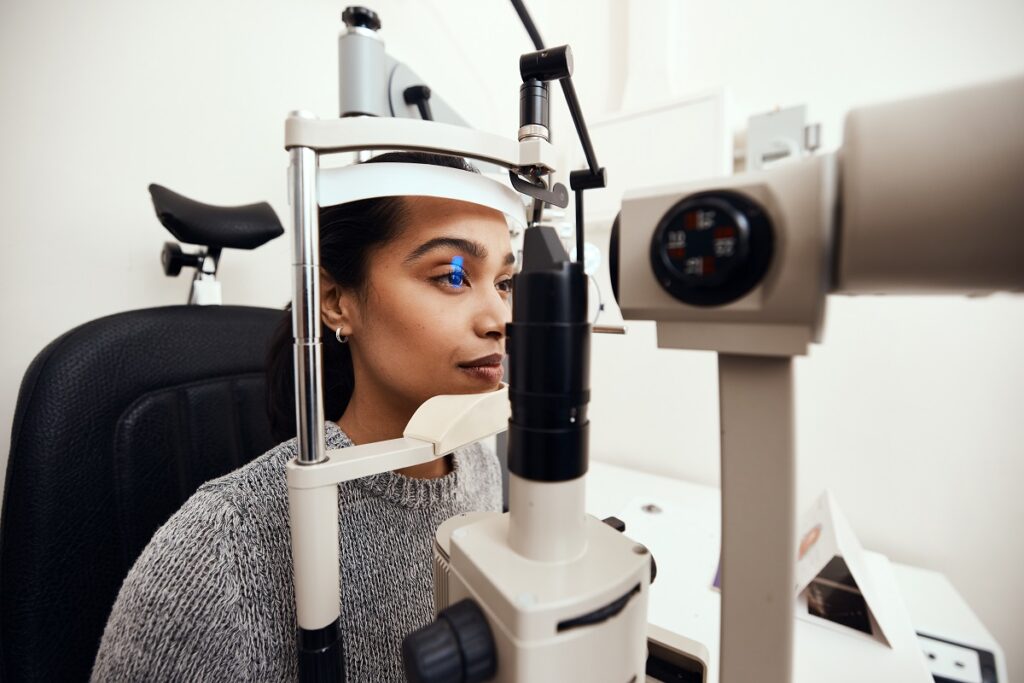Exploring the Latest Technological Advancements in Optometry and What They Mean for Eye Doctors
In the ever-evolving field of optometry, recent technical developments are improving exactly how practitioners come close to eye care. From the accuracy of Optical Coherence Tomography to the nuanced understandings used by AI-driven analysis tools, these innovations are setting brand-new requirements in patient analysis and treatment. Teleoptometry is positioned to redefine ease of access, ensuring that expertise transcends geographical constraints. As these developments penetrate the method, eye doctors are confronted with the difficulty of welcoming these tools to boost client outcomes. Yet, the inquiry remains: exactly how will these technical shifts redefine the functions and duties within the profession?
Advancements in Diagnostic Devices
Advancing the field of optometry, developments in analysis devices have actually changed the way eye care professionals evaluate and identify visual impairments and ocular conditions. The previous years has actually experienced substantial technical improvements, making it possible for even more detailed and precise examinations. Optical Coherence Tomography (OCT), as an example, provides high-resolution cross-sectional photos of the retina, permitting for the very early discovery of illness such as glaucoma and age-related macular degeneration. This non-invasive imaging technique has come to be essential in contemporary optometric practice.
One more key technology is the introduction of advanced corneal topography systems, which map the surface curvature of the cornea with accuracy. These tools are especially advantageous for suitable call lenses and diagnosing corneal problems. Furthermore, digital retinal imaging has actually transformed conventional ophthalmoscopy, supplying detailed, panoramic views of the retina that promote extensive aesthetic exams.
The development of wavefront aberrometry has likewise been critical, allowing the analysis of refractive errors with unequaled precision (Opticore Optometry). This innovation helps in customizing restorative lenses and improving medical end results for refractive surgical procedures. Collectively, these analysis advancements empower optometrists to deliver exceptional client care, guaranteeing early intervention and tailored therapy approaches, inevitably boosting aesthetic health and wellness results
AI in Individual Management
Building on the structure of sophisticated analysis tools, the consolidation of expert system (AI) in patient monitoring stands for a transformative jump for optometry. AI systems are progressively employed to boost effectiveness, accuracy, and customization in individual care. By analyzing substantial quantities of information, AI can identify patterns and predict possible ocular conditions, making it possible for optometrists to tailor treatments better. This capability is important in managing persistent eye diseases such as glaucoma and diabetic retinopathy, where very early discovery and continual tracking are crucial.
In addition, AI-driven platforms promote streamlined individual communications and administrative procedures. Automated organizing, virtual appointments, and personalized follow-up plans not just boost client contentment but likewise maximize time management for professionals. These systems can triage patients based on the necessity of their conditions, making sure that those in crucial demand receive prompt interest.
Moreover, AI boosts decision-making by providing optometrists with evidence-based suggestions and therapy paths. By incorporating data from electronic health records, AI tools supply understandings that notify professional decisions, minimizing the threat of mistakes and enhancing individual outcomes. As AI continues to progress, its duty in person management will likely expand, reshaping the landscape of optometric treatment.
Advances in Retinal Imaging
In the realm of optometry, retinal imaging has seen amazing technological improvements that are improving diagnostic abilities and individual care. Developments such as Optical Coherence Tomography (OCT) and fundus photography have transformed exactly how optometrists imagine and evaluate the retina. OCT, in particular, provides high-resolution, cross-sectional photos of the retina, permitting the thorough assessment of its layers. This ability is very useful for very early discovery and administration of problems like glaucoma, diabetic person retinopathy, and age-related macular degeneration.
Boosted imaging modalities like OCT angiography are additional refining analysis accuracy. Eye Doctor. Such innovations facilitate the identification of min retinal adjustments that could represent condition development.
In addition, advancements in fabricated intelligence are enhancing retinal imaging by making it possible for automated analysis of big datasets. These systems help eye doctors in identifying patterns a sign use this link of pathology, consequently boosting diagnostic accuracy and effectiveness. Collectively, these technologies are transforming retinal imaging into a foundation of modern-day eye treatment, enhancing results and increasing restorative opportunities.
Teleoptometry's Expanding Role
Teleoptometry is progressively becoming a vital part of eye care, driven by developments in digital interaction and diagnostic tools. This is particularly valuable in underserved and rural areas where accessibility to specialized eye care is frequently limited.
The integration of fabricated intelligence (AI) further improves teleoptometry, allowing the analysis of aesthetic information and assisting in the discovery of ocular problems such as glaucoma and diabetic retinopathy. AI-powered formulas can quickly interpret complicated imaging data, offering optometrists with useful insights that boost medical decision-making.
In addition, teleoptometry supports connection of care with smooth combination with digital health documents (EHRs), permitting optometrists to keep comprehensive person histories. When consulting with different professionals., this ensures that patients get individualized and regular care even.
In spite of these benefits, obstacles remain, including making certain data safety and security and taking care of person assumptions. Teleoptometry represents a significant stride towards more available, efficient, and patient-centered eye care. As innovation advances, its function is poised to increase better.

Future Fads in Eye Treatment
A myriad of innovative trends is set to reshape the future of eye treatment, driven by technological improvements and the progressing demands of patients. One considerable trend is the integration of expert system (AI) in diagnostics, which guarantees to enhance the precision and efficiency of eye evaluations. AI algorithms can assess large amounts of information from retinal pictures, possibly finding conditions like diabetic person retinopathy and glaucoma earlier than conventional techniques.
Moreover, individualized medication is gaining grip in optometry, with genetic screening educating personalized therapy strategies. This strategy aims to optimize individual results by customizing interventions to individual hereditary accounts. Wearable modern technology, such as wise contact lenses, is also on the horizon, offering real-time monitoring of intraocular pressure or sugar levels, therefore providing continual understandings right into ocular and systemic health.
The adoption of increased reality (AR) and online truth (VR) in training and client education and learning is an additional arising trend. These innovations use immersive experiences that can improve understanding and abilities both for clients and optometrists. As these fads develop, eye doctors must stay abreast of technical developments to give innovative treatment, ensuring improved patient outcomes and complete satisfaction in the dynamic landscape of eye treatment.
Verdict

Collectively, these diagnostic improvements equip optometrists to deliver superior person treatment, making sure very early treatment and customized therapy techniques, inevitably improving visual health and wellness results.

As these modern technologies proceed to advance, optometrists have to adapt and incorporate them right into practice, eventually optimizing process performance and boosting the requirement of eye care supplied to clients.